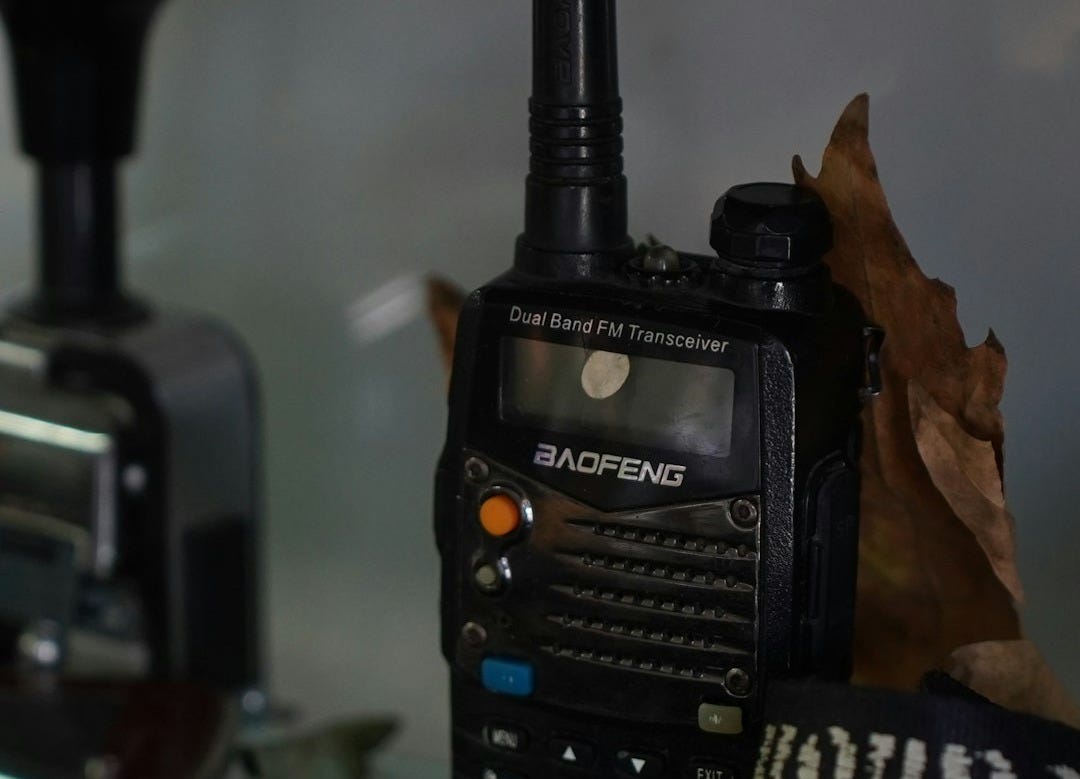Talk the Walk: Choosing the Right Radio for Your Adventures
A Hands-On Guide to CB, GMRS, FRS, and MURS for Off-Grid Communication, Emergency Prep, and Everyday Use

In today’s world of smartphones and digital communication, personal radio services like CB (Citizens Band), GMRS (General Mobile Radio Service), FRS (Family Radio Service), and MURS (Multi-Use Radio Service) still have a vital role to play. Whether you're off-roading in the backcountry, coordinating an event, or preparing for emergencies, these radio bands offer a reliable means of communication independent of cell towers or the internet. But which band is best for your needs? Each has its own advantages, legal requirements, range limitations, and ideal use cases. In this guide, we’ll dive deep into the strengths and weaknesses of each radio service to help you determine which is the best fit.
CB Radio: The Long-Standing Standard
CB radio has been a staple in vehicle-based communication since the 1970s, particularly among truckers, RVers, and off-road enthusiasts. Operating on 40 channels within the 27 MHz band, CB does not require a license and is easily accessible. Its main selling point is its simplicity and nationwide community—channel 19, for instance, is almost universally used for highway traffic reports.
However, CB radio operates on AM frequencies, which are more susceptible to atmospheric interference and generally have lower audio clarity. Power is also limited to 4 watts for AM and 12 watts for SSB (Single Side Band), making range inconsistent—usually between 1 to 5 miles, depending on terrain and antenna quality. That said, CB is ideal for vehicle-to-vehicle convoys, roadside assistance, and general highway chatter. But for more demanding applications or clearer audio, one of the UHF options may serve you better.
GMRS: High Power and Versatility (With a License)
GMRS is one of the most powerful and flexible personal radio services available to the public. It operates in the UHF band around 462 and 467 MHz, offering cleaner audio and better performance in urban and wooded environments compared to CB. GMRS allows up to 50 watts of power on certain channels and supports repeater use, which can extend your communication range to 20 miles or more in ideal conditions.
The downside? GMRS requires a license from the FCC, which costs $35 and is valid for ten years. The good news is that the license covers your entire immediate family—making it a great option for households who want reliable communication for travel, hiking, or emergencies. GMRS radios tend to be more expensive than FRS radios, but the extra power, antenna options, and repeater capabilities make it well worth the investment for users who need extended range and reliability.
FRS: Simple, Legal, and Family-Friendly
FRS radios are the most accessible of all radio services—no license is required, and the devices are typically sold in big-box stores in two-packs or more. Operating on the same frequencies as GMRS (sharing 22 channels), FRS radios are limited to 2 watts of power and use fixed antennas. Their range is usually about 0.5 to 2 miles in real-world conditions.
FRS is ideal for families, short-range communication at parks or amusement areas, and casual use around campsites. Since you don't need a license, FRS makes a great entry point for people unfamiliar with radios. However, it lacks the power, range, and flexibility of GMRS, and it can get crowded during peak times due to the popularity of the band. Still, for short-range, no-hassle communication, FRS fits the bill perfectly.
MURS: The Quiet and Flexible Option
The Multi-Use Radio Service (MURS) is less known than the others, but it occupies a unique and valuable niche. Operating in the VHF band (151–154 MHz), MURS offers 5 channels and allows up to 2 watts of power, with no license required. One of MURS’s biggest strengths is that it permits external antennas, which can significantly improve range, especially in open or rural environments.
MURS is often used by businesses, outdoor enthusiasts, and preppers due to its relatively quiet frequencies and the ability to use it with long-range antennas. The VHF band also performs better than UHF in open terrain, making MURS especially well-suited for farm operations, ranches, and hiking trails. However, the limited number of channels and lack of repeaters can be a drawback in busier areas.
Which One Is Best for You?
Choosing the best radio band depends entirely on your use case:
For long-distance, vehicle-based communication: CB remains a solid choice, especially if you’re part of the highway or off-road community. It’s free and has a large, established user base.
For general-purpose, high-quality communication with flexibility and power: GMRS is the top recommendation if you're willing to get a license. It offers the best range, repeaters, and family coverage.
For casual, low-cost use among friends or family: FRS is ideal for short-range, no-license-required communication. It’s perfect for kids, day hikes, or festivals.
For rural, quiet, and flexible communication without a license: MURS is a hidden gem. Its VHF performance and antenna flexibility make it perfect for farms, outdoor work, and long-range simplex communication.
Conclusion
No single radio band is universally superior—each one has trade-offs in power, range, licensing, cost, and interference. The key is to match the strengths of the radio service with your specific needs. Whether you’re coordinating a trail ride, preparing for a natural disaster, or just keeping in touch at a campground, there’s a radio solution that fits. By understanding the capabilities and limitations of CB, GMRS, FRS, and MURS, you can make an informed choice that keeps you connected when it matters most.




What are the long haul truckers using? FM? GMRS? other?
thanks for post.
oh, btw - you show baofeng. i have a dusty UV-54 - probably not MURS-capable. Any good recommendations here?
thanks again.